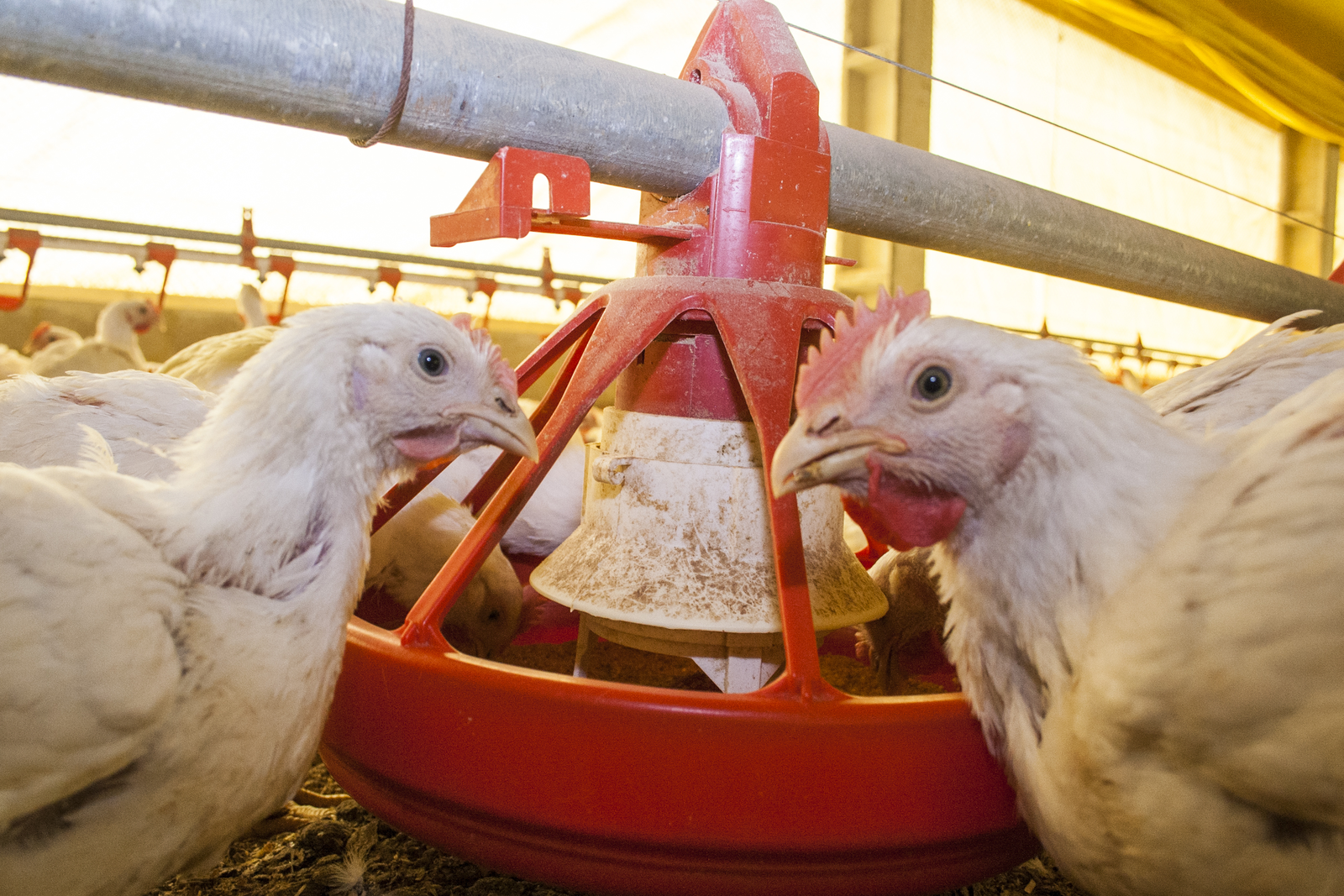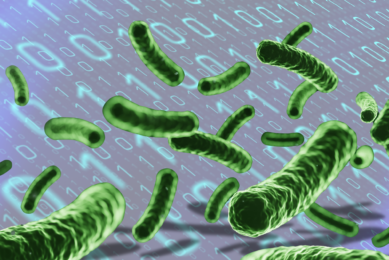Probiotics and enzymes: A good combination

It seems to be more than just a gut feeling. Probiotics and enzymes have been proven to have a positive effect on the gut health of ?chickens. This in turn can help in reducing the use of antibiotics on farms.
Sub-therapeutic use of antibiotic growth promoters (AGPs) has been practiced in the poultry industry since 1946 when Moore et al showed that their application resulted in weight gain in chickens. While their use has had a part to play in the 66% increase in broiler weight from 1960-20101, research has shown that the regular low levels of antibiotics used in animal production has – as Fleming predicted in his Nobel prize winning speech in 1945 – allowed resistant microbes to survive and evolve. Even as early as the 1950s, researchers2 were reporting resistance in birds to antibiotics regularly used to treat humans. Further evidence of drug-resistant bacteria3 drug residues in the body of the birds4, an imbalance of normal micro flora5 and the transfer of antibiotic resistance genes from animal to human microbiota6 culminated in a total ban in AGP use in Sweden in 19867. This ban spread across the EU in 2006 and Korea followed suit in 2011.
Reduced use of antibiotics
Today, there is mounting evidence to suggest that antibiotic resistance can pass into the food chain through bacteria like Salmonella spp and Campylobacter spp, which are the most common causes of bacterial diarrhoea in humans worldwide. Because of food safety concerns, four major US states have signed up for an in-feed antibiotic bans in the last year, For countries such as the US, where it is estimated that over 80% of all the antibiotics sold a year (around 13,000 tonnes in 2009) are used in livestock production and the number one producer/user of antibiotics in the world, China, which feeds more than half of the 200,000 tonnes of antibiotics produced to livestock, it has never been more important to look for other ways to improve performance and animal liveability.
The importance of balance
Klasing, (1987) made the connection between gut microbiota imbalance and poor growth performance and more recently researchers such as Choct and Biscoff have identified the negative effects that non-beneficial bacteria can have on gut morphology, nutrition, pathogenesis of intestinal disease and immune response. Bischoff also made a connection between an animal’s psychological state and production environment, and the state of its health. The acquisition of a positive microbiota in the first few days after hatching has a profound effect on the overall health of a bird. Commercial production conditions and the short life span of a broiler chicken do not allow for the complete maturation of the avian immune system. This, in turn, can predispose the bird to challenges that manifest themselves in obvious ways, i.e. diarrhoea, or that can be subclinical, reducing production parameters such as growth and feed conversion efficiency8.
Role of feed enzymes
Undigested nutrients flowing to the hind gut have been shown not only to impact performance but to also directly contribute to undesirable shifts in the gut microbiota9. This, in turn, impacts the dynamic balance of the mucus layer, epithelial cells and immune cells in the intestine10 and negatively affects Feed Conversion Ratio (FCR) and bird health. Undigested protein, for example, has been suggested as a factor linked to the establishment of Clostridium perfringens, coccidiosis, and associated necrotic enteritis episodes in chickens11. Combinations of feed enzymes such as xylanase, amylase and protease have, been proven to reduce the amount of undigested nutrients or ‘substrates’ in the duodenum, jejunum and ileum increasing the digestibility of even so called “simple” diets and improving healthy broiler performance12. As well as the effect that protease has on reducing undigested protein, it has also been suggested that it can stimulate the production of mucus and could be associated with better responses of chickens in response to coccidial challenges13. Enzymes such as xylanase have also been shown to generate arabino-xylo-oligosaccharides (AXOX), particularly in the caecal phase. These act as prebiotics, selectively stimulating the growth of beneficial bacteria. They also produce short chain fatty acids (SCFA) in the intestine. These are not only a good energy source; they have also been shown to reduce Salmonella colonisation in the caeca and systemic spread to the spleen14 and improve performance in a Campylobacter jejuni challenge model where the birds were fed wheat-based diets15.
How probiotics work
As early as 1974, Parker had established that probiotics contributed to intestinal microbial balance but it wasn’t until 1989 that Fuller acknowledged that this contribution was beneficial to the host animal. Lee et al (2010) identified that the spore forming Bacillus spp made the gut environment less conducive to colonisation by pathogenic bacteria, competing with them for mucosal attachment and nutrients and improving nutrient uptake through villi development (Figure 1) Bacillus spp have also been shown to lower the pH through acid fermentation, creating a positive environment for beneficial bacteria such as Lactobacilli which have been shown to reduce amounts of pathogenic bacteria such as Salmonella, E. coli, Campylobacter and Clostridium16.
Unlike some other probiotics, Bacillus strains can also resist heat and high pressure17, helping them survive the hostile steam conditioning and pelleting process routinely used in the feed industry. There is also strong evidence to suggest that multi-strain Bacillus are more effective than single strain equivalents. FCR improvements of 4.4% average have been shown across multiple trials conducted with multi-strain Bacillus in the first few weeks post hatch, while Figure 2 shows that application of the same three strain Bacillus product reduces the negative impact necrotic enteritis challenge has on performance from hatch to 28 days.
An additional advantage of some Bacillus strains is their compatibility with other feed additives such as antibiotics18 and enzymes (Figure 3).
Solution has to be cost-effective
In trials with non-challenged broilers fed a corn/soy diet containing some fibrous cereal by-products, Romero et al (2013) observed significant incremental increases in nitrogen corrected apparent metabolisable energy (AMEn) with additions of a three strain Bacillus probiotic and xylanase, amylase and protease enzymes. The results from two further trials at Southern Poultry Research, Georgia, USA, (2013) showed that these benefits also extended to a specific necrotic enteritis (NE)
challenge model, giving net benefits of 14% in relative cost per kg live weight gain versus the challenged control at current feed prices. Foot pad lesion scores have also been shown to be significantly lower than the controls with inclusion of feed additive containing the same multi-enzymes and multi-strain Bacillus combination to commonly used AGPs, Virginiamycin and Bacitracin Methylene Disalicylate19.
It goes without saying that solutions to reduce AGP use in commercial operations need to be cost-effective and reliable. Trials have already shown that adding phytase to a xylanase, amylase, and protease and Bacillus combination resulted in 2.5% higher gross profit in a cost comparison with an antibiotic growth promoter20. But it’s the cost to human health and food safety that will prompt worldwide reductions in AGP use. Antibiotic resistant superbugs are, after all in the words of the WHO, “notorious globe-trotters”.
References on request from DuPont: monica.hart@dupont.com
Article featured in AllAboutFeed 22.10 2014











